Idea by
I Chieh Liu
Call for ideas 2020
Homelessness and the Inclusive City
Homelessness and the Inclusive City
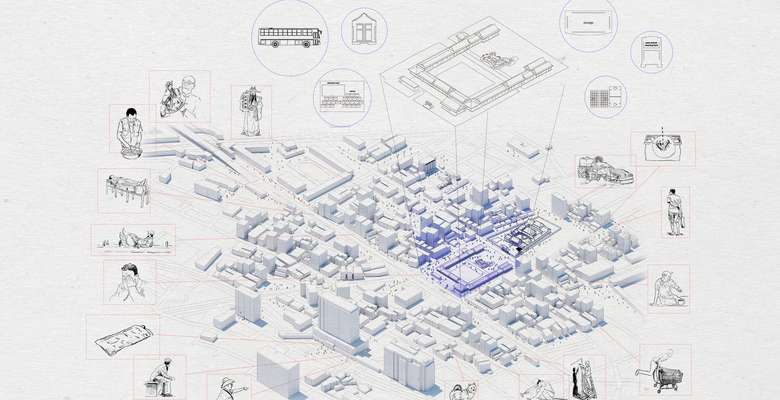
- Site-specific cases
The project explores how architecture participates in urban homelessness by studying an area with one of the largest homeless populations in Taiwan: the Wanhua district in Taipei. The research led to a proposal for the redesign of the so-called 'homeless park'. Previous initiatives to strengthen this existing platform by introducing support services for the homeless, which could improve their living conditions, have met with a great deal of resistance from the population.
How can the Wanhua district become a more pleasant place to stay for the homeless without the local population rebelling? This question was the starting point for my project, which did not aim for an attractive ‘final image' of a redeveloped park, but for a network that is both socially supportive and community-oriented. The result is a strategic planning method to encourage the interested parties from the district and the municipality to tackle the living conditions of the homeless community in the park together.

Homelessness is particularly common among people who do not have enough social, cultural or economic capital to stand their ground in modern society. For my project, I studied an area with one of the largest homeless populations in Taiwan: the Wanhua district in Taipei.
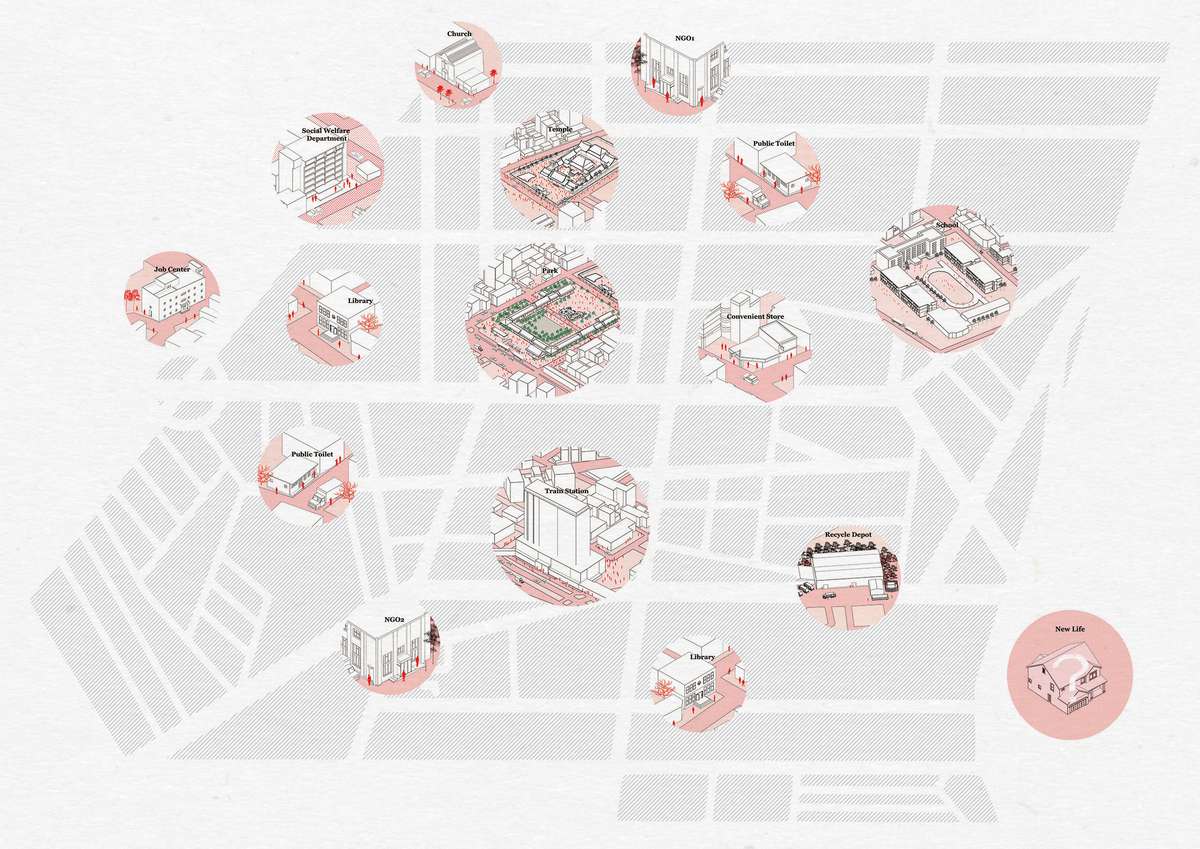
Through observations, I have investigated the basic needs of the homeless community in this district and mapped out how the homeless can survive in a hostile environment. By studying the existing urban ecology, I investigated the role that architecture could play in supporting this large group of homeless, mainly elderly people.
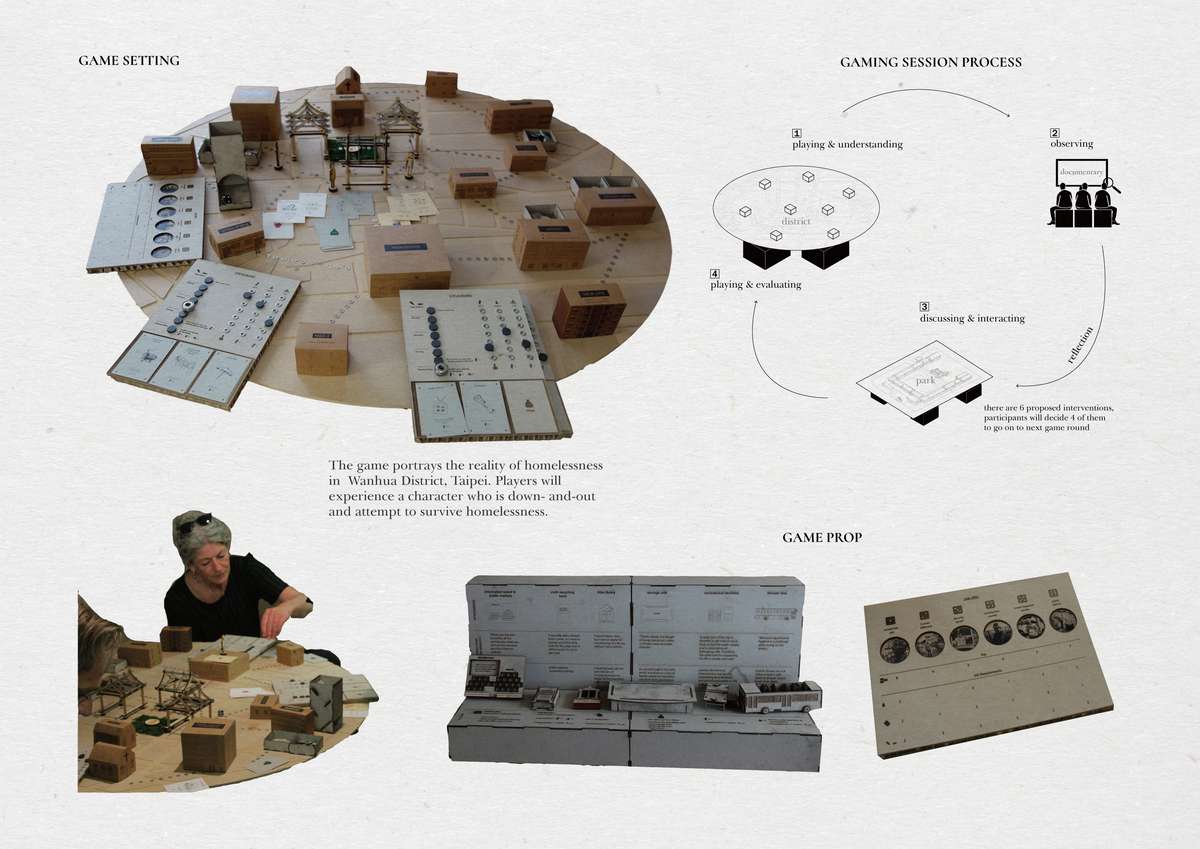
My development is a strategic planning method to encourage the interested parties from the district and the municipality to tackle the living conditions of the homeless community in the park together. This approach starts by gaining insight into how a homeless person lives in the park. To this end, I developed a simulation game in which portrays the reality of homelessness in the Wanhua District.
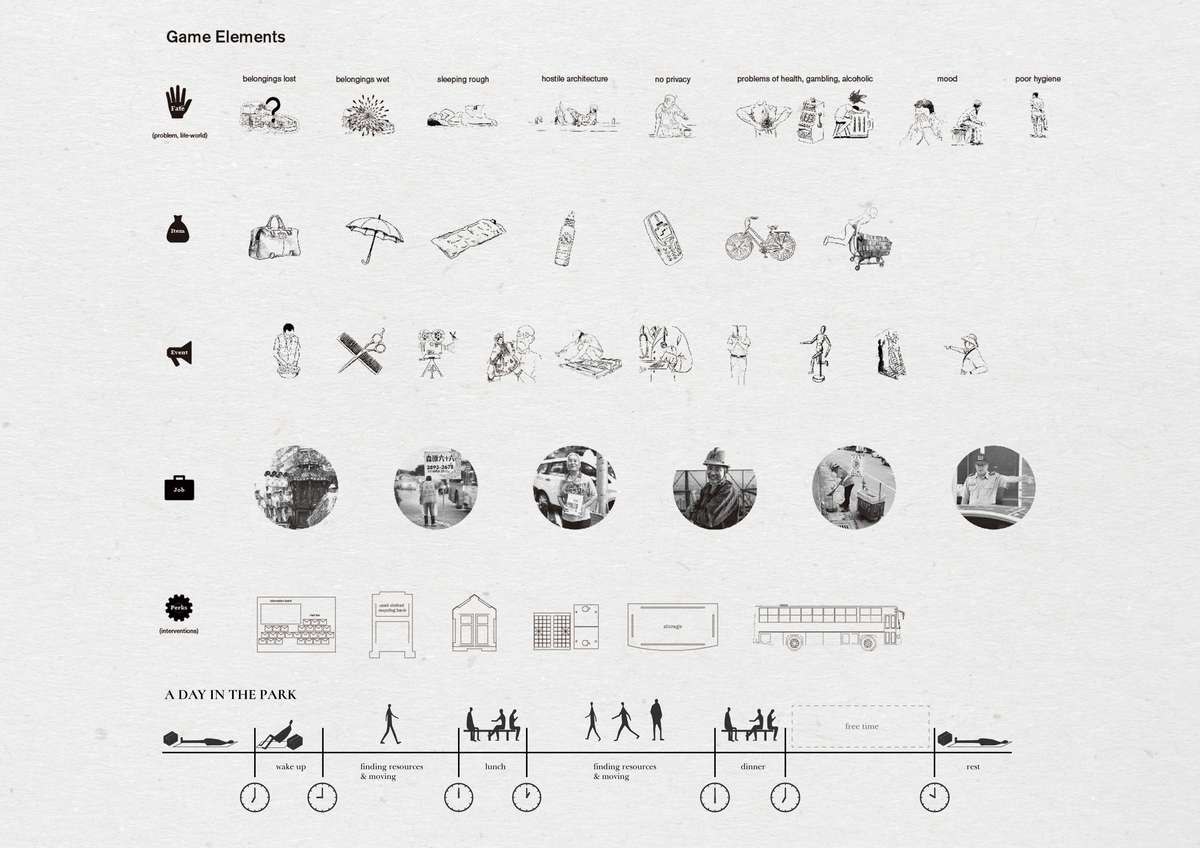
The interface of the game carries information based on the existing local site and real context. The core of the game is to not only portray the reality of homelessness but explore the supporting network of the district. Regarding gaming session, in the first round, the participants 'play' several days in the life of a homeless person. In the second round, the game offers the participants the opportunity to use the spatial interventions I have prepared to improve the situation of the homeless.
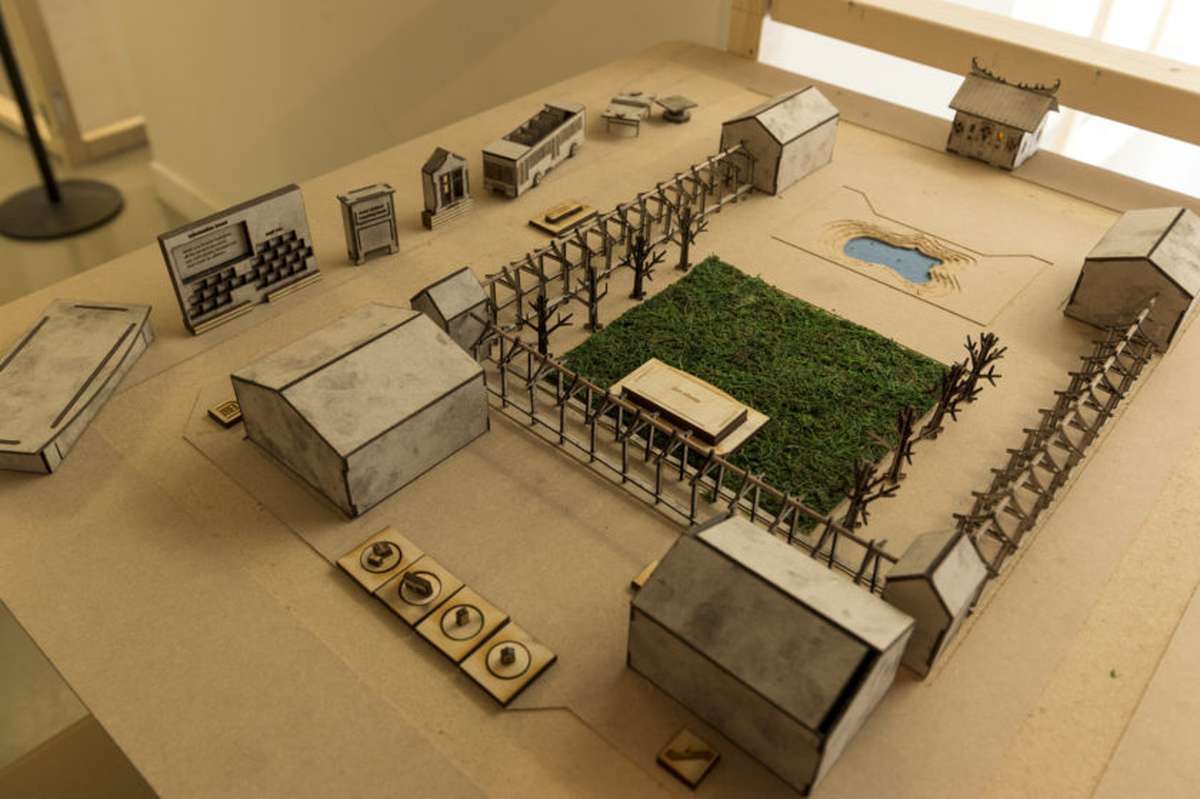
Due to the hard confrontation with the hopeless existence of the homeless and the opportunities that facilities could offer to escape from it, the game functions as an instrument to create involvement. This local involvement with the homeless is a crucial step in the final redesign of the park in which the spatial interventions introduced in the game play a decisive role.
Homelessness and the Inclusive City
Homelessness and the Inclusive City

- Site-specific cases
The project explores how architecture participates in urban homelessness by studying an area with one of the largest homeless populations in Taiwan: the Wanhua district in Taipei. The research led to a proposal for the redesign of the so-called 'homeless park'. Previous initiatives to strengthen this existing platform by introducing support services for the homeless, which could improve their living conditions, have met with a great deal of resistance from the population.
How can the Wanhua district become a more pleasant place to stay for the homeless without the local population rebelling? This question was the starting point for my project, which did not aim for an attractive ‘final image' of a redeveloped park, but for a network that is both socially supportive and community-oriented. The result is a strategic planning method to encourage the interested parties from the district and the municipality to tackle the living conditions of the homeless community in the park together.
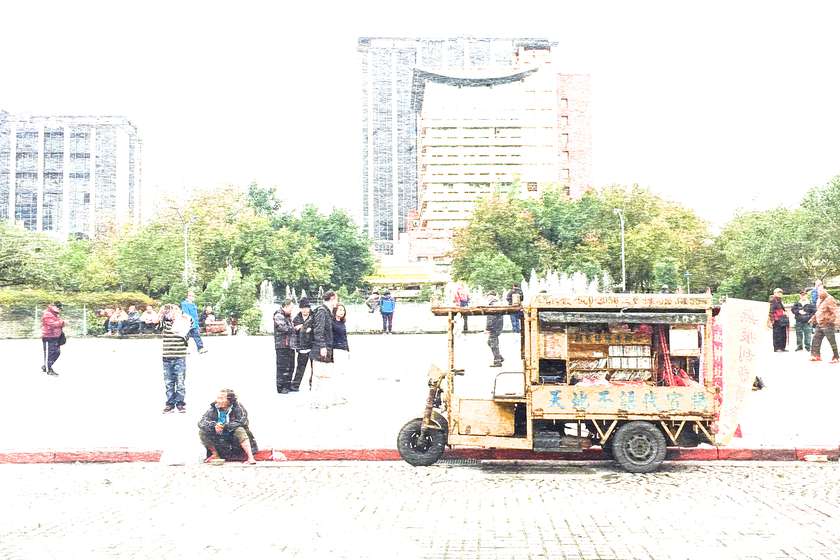
Homelessness is particularly common among people who do not have enough social, cultural or economic capital to stand their ground in modern society. For my project, I studied an area with one of the largest homeless populations in Taiwan: the Wanhua district in Taipei.
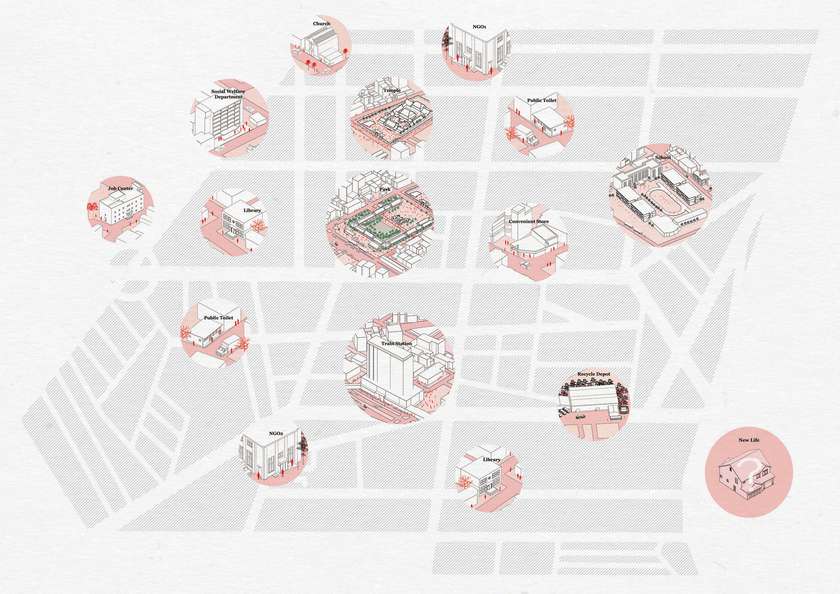
Through observations, I have investigated the basic needs of the homeless community in this district and mapped out how the homeless can survive in a hostile environment. By studying the existing urban ecology, I investigated the role that architecture could play in supporting this large group of homeless, mainly elderly people.
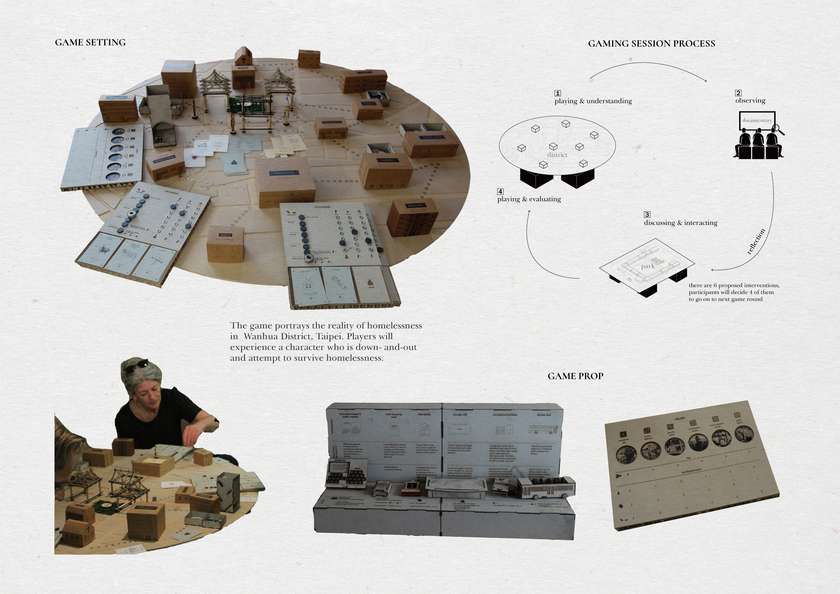
My development is a strategic planning method to encourage the interested parties from the district and the municipality to tackle the living conditions of the homeless community in the park together. This approach starts by gaining insight into how a homeless person lives in the park. To this end, I developed a simulation game in which portrays the reality of homelessness in the Wanhua District.
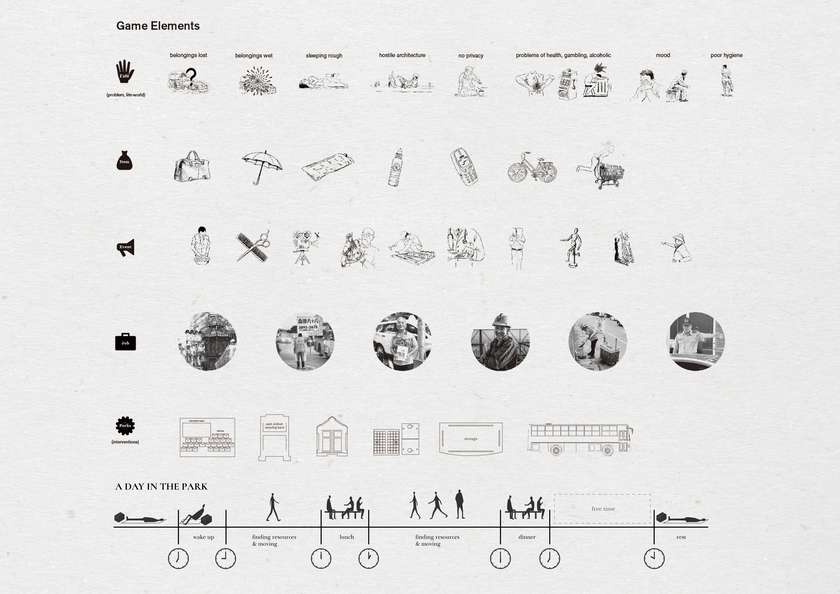
The interface of the game carries information based on the existing local site and real context. The core of the game is to not only portray the reality of homelessness but explore the supporting network of the district. Regarding gaming session, in the first round, the participants 'play' several days in the life of a homeless person. In the second round, the game offers the participants the opportunity to use the spatial interventions I have prepared to improve the situation of the homeless.
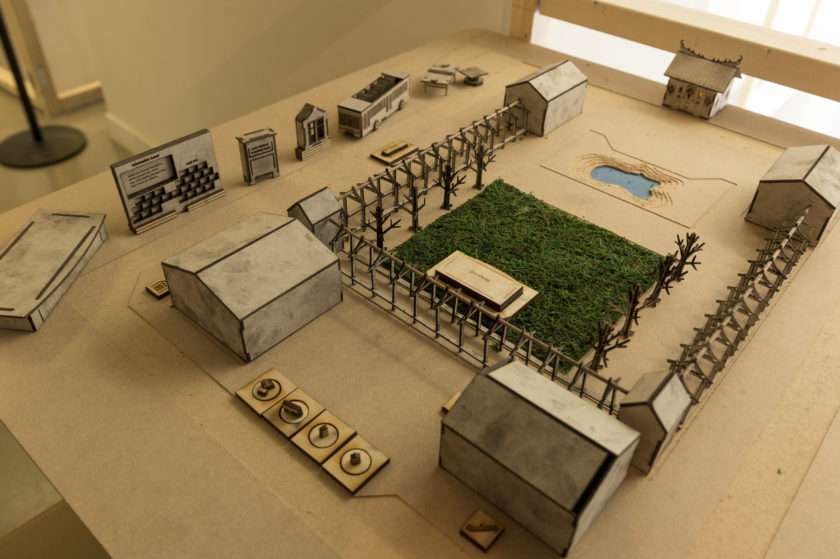
Due to the hard confrontation with the hopeless existence of the homeless and the opportunities that facilities could offer to escape from it, the game functions as an instrument to create involvement. This local involvement with the homeless is a crucial step in the final redesign of the park in which the spatial interventions introduced in the game play a decisive role.